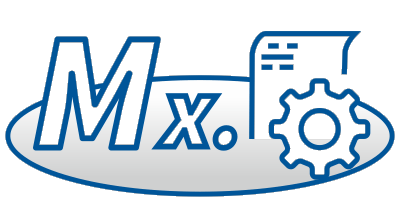Informix Machine Notes
Hier finden Sie aktuelle Machine-Notes zu Informix-Produkten, die wir für Sie herausgesucht haben.
=================================
MACHINE SPECIFIC NOTES
FOR
IBM Informix Database Server 12.10.FC6 PRODUCT RELEASE
On Mac OS X Server x86_64
DATE: 29 Oct 2015
=================================
OS Information : Built on Mac OS X Server 10.9.2.
System Requirements
===================
1. This product was built on Mac OS X Server 10.9.2 with build version 13C64,
Darwin Kernel Version 13.1.0. And using the following compilers:
gcc and g++ 4.2.1 (Apple LLVM version 5.1)
2. IBM Informix Database Server uses the libraries and utilities provided by
the IBM Global Security Kit (GSKit) for data encryption and Secure Sockets
Layer (SSL) communication. The GSKit is bundled with the server and will
be installed on your machine as part of the server installation process.
Here are more details on the GSKit:
a. The GSKit 8.0.50.52 will be installed in /Library/ibm/gsk8
directory on your machine.
b. The GSKit installation directory must have 60 MB of free disk space.
Check the following web site for the latest Mac OS X system requirements for
IBM Informix Database Server:
http://www-01.ibm.com/support/docview.wss?rs=630&uid=swg27013343
System Configuration
====================
1. Kernel Parameters
The values of the kernel parameters that were used for testing this
product are given below. These values might need to be adjusted depending
on the application and availability of system resources.
kern.sysv.shmmax=4398046511104
kern.sysv.shmmin=1
kern.sysv.shmmni=512
kern.sysv.shmseg=512
kern.sysv.shmall=1073741824
kern.sysv.semume=10
kern.sysv.semmsl=87381
kern.sysv.semmnu=87381
kern.sysv.semmns=87381
kern.sysv.semmni=87381
kern.maxfiles=2147483647
kern.maxfilesperproc=40000
kern.maxvnodes=150000
net.inet.tcp.sendspace=524288
net.inet.tcp.recvspace=524288
The kernel parameters can be set permanently in /etc/sysctl.conf file,
which is processed by the system boot file during system startup.
The kernel parameters also can be set by running the "sysctl" command.
Any user can check the value of a parameter, but you must be user root
(or sudo) to set parameter values. The "sysctl" command takes effect
immediately, but parameters are reset to their original values during
a system reboot.
To check current value of kern.sysv.shmmax, use this command:
sysctl kern.sysv.shmmax
To set the value of kern.sysv.shmmax to 4398046511104, use this command:
sysctl -w kern.sysv.shmmax=4398046511104
2. Location of Shared Memory
The ONCONFIG variable SHMBASE is set to the following:
SHMBASE 0x200000000L
3. Environment Variables
It is recommended that the environment variable INFORMIXSTACKSIZE be
set to 128 (the default is 96) if the application involves operations
which would require the IBM Informix Database Server to perform recursive
database tasks (for example, cascading deletes).
4. ONCONFIG Parameter PRELOAD_DLL_FILE
It is recommended for using BTS Search Database Extension to set the
ONCONFIG parameter PRELOAD_DLL_FILE as:
PRELOAD_DLL_FILE /work/engops/jenkins/exportedviewRoot/ids1210-rel-o-macosx64/vobs/tristarm/sqldist/extend/bts.3.10/bts.bld
Feature Notes (alphabetized by feature)
=============
1. IPv6 Support
The Informix database server supports Internet Protocol Version 6 (128 Bit
Internet Addresses) as well as IPv4 (32 Bit Addresses).
In order for the machine name specified in the SQLHOSTS file to resolve to
the correct IP address, the name services files on the operating system
should be correctly configured.
For compatibility with earlier version of Informix client and server
products, assign each host name with both an IPv4 address and an IPv6
address. If the listener needs to be bound to an IPv4 address, and the
name services resolve the name in the order of the IPv6 address followed
by the IPv4 address, then an explicit IPv4 address needs to be put in the
host name field of SQLHOSTS file. Client applications should also use the
same setting.
2. Kernel Asynchronous I/O (KAIO)
KAIO is enabled by default on this platform.
The following kernel configurations might need to be adjusted to allow
the necessary number of concurrent asynchronous disk I/Os:
kern.aiomax - The maximum number of system-wide concurrent
asynchronous disk I/Os allowed.
kern.aioprocmax - The maximum per-process number of concurrent
asynchronous disk I/Os allowed.
kern.aiothreads - Must be equal or greater than the number of CPU VPs
that the Informix server has configured.
To disable KAIO, set the environment variable KAIOOFF to 1:
KAIOOFF=1 ; export KAIOOFF ( for Bourne or Korn shell )
setenv KAIOOFF 1 ( for C shell )
3. Large Memory Addressability (LMA)
IBM Informix LMA provides the ability to support system configurations
with greater than 4GB of RAM. Most UNIX systems are limited to 4GB of
RAM based on the memory addressing limitations of 32-bit architectures.
The values for the following ONCONFIG parameters are increased from
32-bit to 64-bit platform by LMA support:
- The maximum number of buffers in BUFFERPOOL is 2147483647.
- The maximum of LRU queues for lrus field in BUFFERPOOL is 512.
- The DS_TOTAL_MEMORY, which is the total memory available for
decision support memory, is only limited by the amount of virtual
memory available. The sort memory comes out of the DS_TOTAL_MEMORY
memory and hence there is no explicit limit on the amount of sort
memory.
- The read ahead parameter RA_PAGES is only limited by the number of
buffers and therefore can be any value less than 2147483647. The
"chunk" write algorithm is not dependent on the amount of buffers
or shared memory and can write as many pages in a single I/O as
possible.
- The maximum size of any shared memory segment is 4292870144 bytes.
- The value for SHMADD is 4294967296 kilobytes.
Refer to IBM Informix Administrator's Reference manual for the
information about the related configuration parameters setting.
4. Network Protocols
The following protocols and interfaces are supported on this platform:
SOCKETS using TCP/IP
IPC using stream pipe (implemented using UNIX Domain Sockets)
To use SOCKETS with TCP/IP:
a. The NETTYPE entry in the ONCONFIG file and the nettype field in
the sqlhosts file entry must contain "onsoctcp".
b. To enable an IBM Data Server Client to connect to the database
Server, the NETTYPE entry in the ONCONFIG file and the protocal
value in the sqlhosts file entry must contain "drsoctcp"
If a CLI or JCC client wants to connect to the database server
through DRDA while supporting SQLI connections, you must add a
DBSERVERALIASES entry to the ONCONFIG file that corresponds to
the sqlhosts file entry.
To use IPC (interprocess communication) with stream pipe:
a. The NETTYPE entry in the ONCONFIG file and the nettype field in
the sqlhosts file entry must contain "onipcstr".
Remote 32-bit applications and tools (example: ESQL/C, 4GL, ISQL) can
only connect to the IBM Informix Database Server using the TCP/IP
protocol.
Local 32-bit or 64-bit applications and tools can connect to the 64-bit
server using either the TCP/IP sockets or the IPC stream pipe protocols.
The protocol for supporting IBM Informix MaxConnect on this platform
is "onsocimc".
5. No Age (Disable Priority Aging)
The no aging feature that disables priority aging of CPU virtual processors
by the operating system can be activated by setting the noage option of the
VPCLASS configuration parameter for the CPU virtual processors. For example,
the following ONCONFIG entry specifies that there are 8 CPU VPs, each
without aging:
VPCLASS cpu,num=8,noage
When the noage option is used, all oninit processes will run at priority
-10.
To override the default priority value for CPU VP class, set the
environment variable IFMXCPUVPPRIORITY to the desired priority,
within limits (-20 to 20) before starting the server.
The server checks and sets the CPU VP process to the defined priority
if the defined value is within the above range.
If IFMXCPUVPPRIORITY is not within the limits, or if IFMXCPUVPPRIORITY
is set to 0, the priority will be set to the default value of -10.
6. Online Backup and Restore (ON-Bar)
ON-Bar uses the XBSA interface. Some of the functions invoked by ON-Bar
are in a shared library supplied by third party storage management vendors.
For ON-Bar to access the functions, set the BAR_BSALIB_PATH parameter in
$INFORMIXDIR/etc/$ONCONFIG to the full pathname of the library.
This dynamic library must be compiled in 64-bit mode.
7. Pluggable Authentication Module (PAM)
PAM functionality is supported on Mac OS X. PAM requires the libpam.dylib
library that is supplied by the Operating System vendor.
Use of PAM can be enabled or disabled by the system administrator. By
default, the Informix server will use the traditional authentication
mechanism to avoid changes for the users.
The PAM service identifies the PAM module. This PAM module usually is
located in /usr/lib/pam and its configurations can be set by individual
configuration files located in the /etc/pam.d directory. Only x86_64
architecture PAM module can be used by IBM Informix Database Server.
8. Secure Sockets Layer
IBM Informix Database Server uses the libraries and utilities provided by
the IBM Global Security Kit (GSKit) for Secure Sockets Layer (SSL)
communication.
a. Before uninstalling GSKit, verify that it is not needed on your
system. It is possible that software other than Informix Database
Server requires GSKit. Uninstalling entails removing GSKit
packages as follows:
To remove the packages, run the following as root user:
cd /Library/ibm/gsk8
pkgutil --only-files --files com.ibm.gskit8.crypto | xargs rm
pkgutil --only-dirs --files com.ibm.gskit8.crypto | xargs rmdir
pkgutil --only-files --files com.ibm.gskit8.ssl | xargs rm
pkgutil --only-dirs --files com.ibm.gskit8.ssl | xargs rmdir
b. If you want to restore Secure Sockets Layer capability after you
have uninstalled GSKit, see the readme file in $INFORMIXDIR/gskit
for how to install GSKit.
9. Simple Password Communications Support Module
The name of the IBM Informix shared library for Simple Password CSM on
Mac OS X is libixspw.dylib.
Features not supported
======================
1. Informix Interface for Tivoli Storage Manager. Without this
feature ON-Bar will not be able to Backup/Restore data using
IBM Tivoli Storage Manager.
2. Processor Affinity
3. Network FASTPOLL
4. Shared Disk Secondary Servers
5. The UNIX graphical tools ipload, onperf and xtree
6. OnSNMP
7. MQ Messaging Database Extension
8. Direct I/O for cooked files used for dbspace chunks
9. J/Foundation
10. High Performance Loader
11. XML Publishing
Known Defects in this release
=============================
For information about known defects in this release, see:
Click here for a list
Defects Fixed in this release
=============================
For information about defects fixed in this release, see:
Click here for a list
(C) Copyright IBM Corp. 2007, 2015























